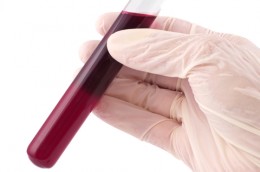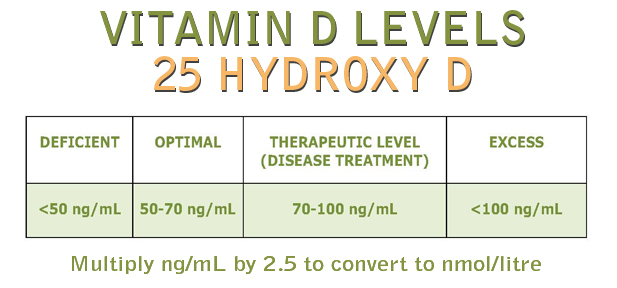How to Accurately Test for Vitamin D Deficiency
 Without adequate levels of vitamin D, you’re probably wasting your time doing anything else to halt or reverse osteoporosis. It’s that important! And yet, this is a test that many doctors will not routinely run; that is, unless you – the patient – requests it. Research confirms that vitamin D3 (cholecalciferol) is a bone health requirement because it is essential for intestinal absorption of calcium and phosphorus. Thus, almost everyone, and especially those who have a high risk of osteoporosis, should be checked for a vitamin D deficiency.
Without adequate levels of vitamin D, you’re probably wasting your time doing anything else to halt or reverse osteoporosis. It’s that important! And yet, this is a test that many doctors will not routinely run; that is, unless you – the patient – requests it. Research confirms that vitamin D3 (cholecalciferol) is a bone health requirement because it is essential for intestinal absorption of calcium and phosphorus. Thus, almost everyone, and especially those who have a high risk of osteoporosis, should be checked for a vitamin D deficiency.
How to Test for Vitamin D Deficiency
The next time you visit your doctor, ask for a blood test called the 25-hydroxy vitamin D test (also called the 25-OH vitamin D test or Calcidiol 25-hydroxycholecalciferol test) to see if you have a vitamin D deficiency. This test is the most accurate way to measure how much vitamin D is in your body. To prepare for the test, do not eat for four hours before your appointment.
The ”normal” range for vitamin D per most lab reports is 30.0 to 74.0 nanograms per milliliter (ng/mL), but virtually all integrative physicians will recommended a minimum level of at least 50 ng/mL. Any levels below 20 ng/mL are considered serious deficiency states. To get an idea of just how widespread vitamin D deficiency is, consider that the late winter average of 25-hydroxy vitamin D in the United States is only about 15-18 ng/mL! Just from purely a statistic standpoint, unless you are taking a high daily dose of supplemental vitamin D3, you are most likely deficient!

How to Reverse Vitamin D Deficiency
Once you get your test results back, if you do have a vitamin D deficiency, try increasing your vitamin D levels using these inexpensive natural remedies:
- Go out into the sun. Recommended sunlight exposure should be from 10 to 30 minutes per day. This is a great way of obtaining vitamin D3; not to mention, it’s very cost effective!
- If getting out in the sun is not an option for you, consider sitting in front of a light box that supplies 10,000 lux of full-spectrum light for 30 minutes every morning. This is an especially good option for winter months, for night shift workers, and for those who live in the upper latitudes where the angle of the sun’s rays do not permit complete production of vitamin D.
- Take vitamin D3 supplements. For the vast majority of people who want to get their vitamin D levels consistently up above 50 ng/mL, supplementation is the easiest, safest, and most effective way to do so. Adults can take vitamin D3 (cholecalciferol) in regular capsule form at levels between 1000 IU and 5000 IU daily. Vitamin D3 is the most readily absorbable form and is much more effective than vitamin D2. Be sure to run the 25-hydroxy vitamin D blood test (by either your doctor or yourself directly) so you can adjust your D3 intake accordingly. The inexpensive testing is the key to knowing where you stand and for determination of the proper daily dosage you need of D3. In fact, some individuals will need to supplement at higher levels, even up to 10,000 IU per day, to get their blood levels into the optimum range. But don’t use that higher dosage unless you have run this inexpensive 25-hydroxy vitamin D blood test. You can also order it directly yourself for only $30 at a place like Life Extension Foundation.
If you’re concerned about low bone density, aside from vitamin D deficiency testing, other osteoporosis screening tests are available:
- Osteoporosis Guidelines: When Should I Get My First DEXA Scan?
- QCT Scan or FRAX Score – Our Comprehensive Guide, Osteoporosis Relief: Natural Remedies for Osteoporosis Prevention and Treatment contains more information about these two important bone density tests.


 Bone Spurs on the Spine
Bone Spurs on the Spine  Knee Injections for Osteoarthritis Pain Relief
Knee Injections for Osteoarthritis Pain Relief  What Is a Slipped Rib?
What Is a Slipped Rib? 